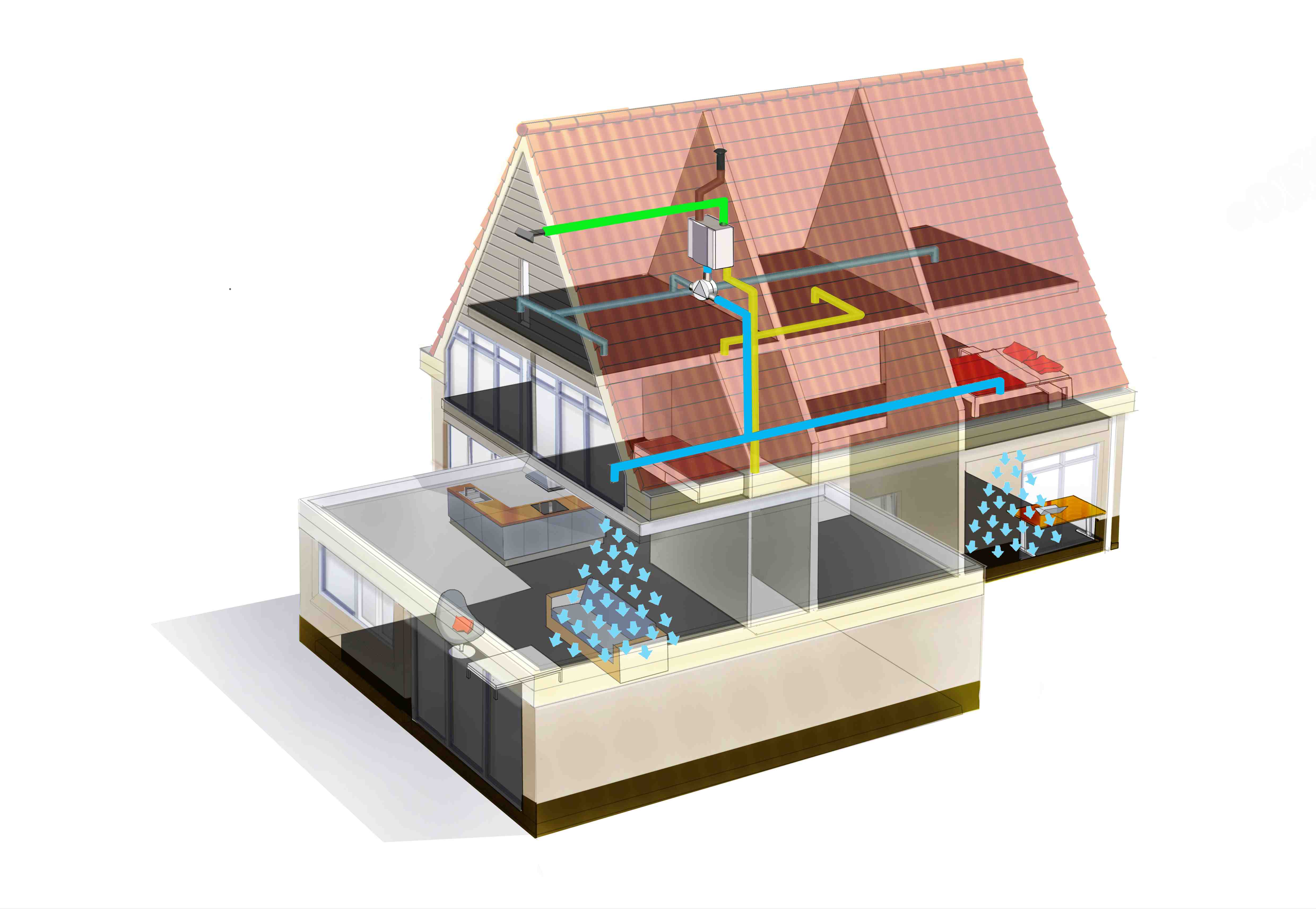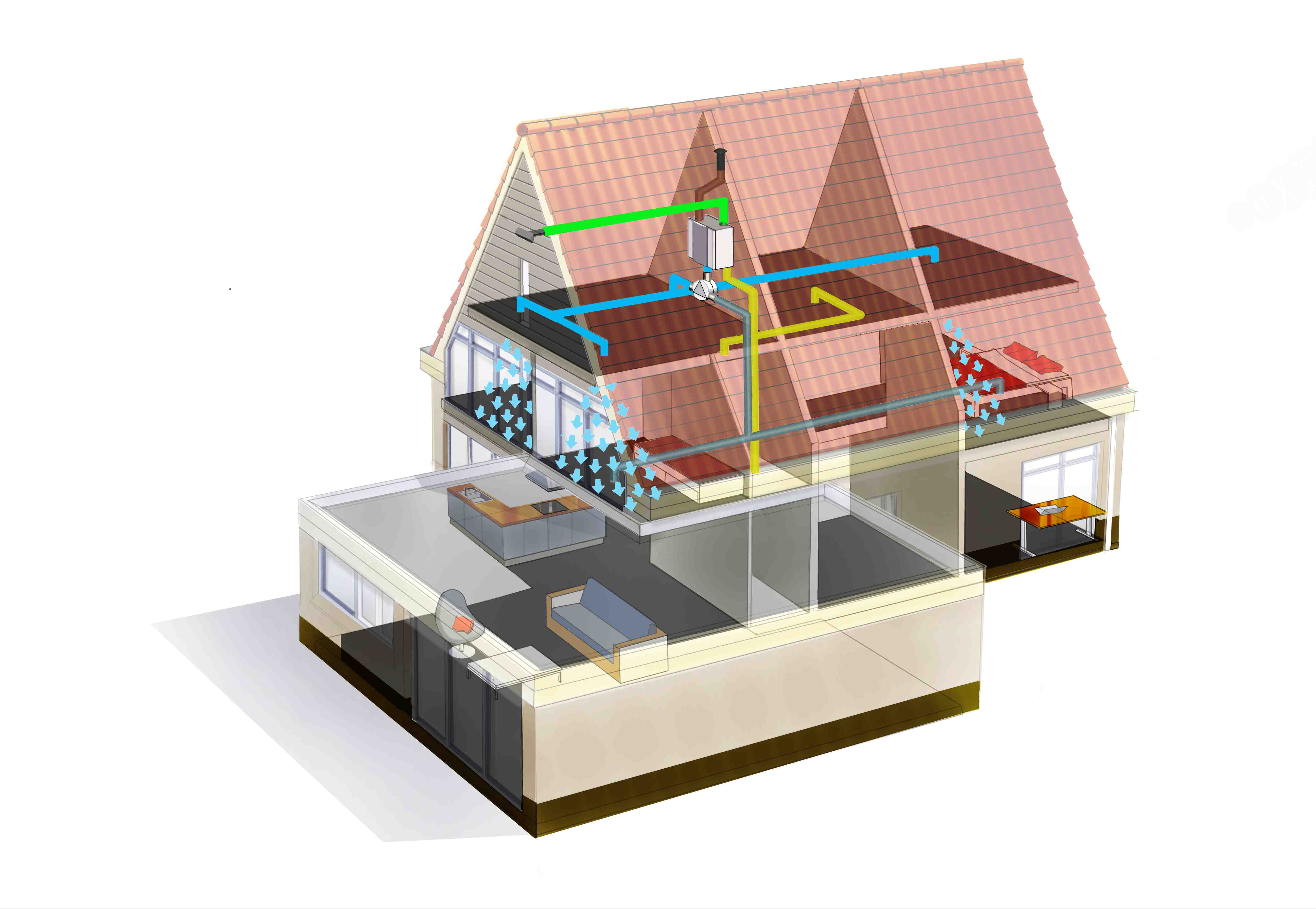DCV
Energy-efficient ventilation with demand-controlled ventilation
What is DEMAND-CONTROLLED VENTILATION?
Unfortunately poor air quality in your home is still a fact of life, especially in today’s well-insulated houses. A completely air-tight house with insufficient and irregular ventilation might well be the cause of a range of health complaints.
Happily, Brink has developed a system with which you can get the air quality in your home up to par effectively and energy-efficiently. A system that provides fresh, clean air in your home, precisely when necessary. Demand-controlled ventilation.
Demand-controlled ventilation is a system that automatically adjusts the level of ventilation to the demand. In this way the smallest possible amount of energy is consumed, while the air quality remains optimal. A win-win situation!
Demand-controlled ventilation can be used in combination with our central ventilation solutions.

How does demand-controlled ventilation work?
With demand-controlled central ventilation, the various rooms in a dwelling receive ventilation where needed. There are two options for demand-controlled ventilation:
- time-driven
- air-quality driven
The first way of demand-controlled ventilation is time driven, with a time switch. The ventilation demand per room can be set to the daytime rhythm of the resident(s). In most cases, for instance, more ventilation is required in the bedroom at night, while during the day the living room needs a supply of fresh air more often.
In the second way of demand-controlled ventilation, the ventilation is automatically controlled on the basis of the concentration of CO2 in a room. Where that value is high (or above the set value), the air quality is too low, so the system automatically feeds in extra fresh air in order to improve the air quality in the room in question. As an option, the moisture content can also be included in the calculation of the air quality. In that case, a relative humidity (RH) sensor is added to the system as an accessory. So the ventilation demand in a room is not determined by the capacity (in m3), but is driven by the air quality in the room. Ventilation is provided only when and where needed, so ventilation is more effective, plus less energy is consumed.
Demand-controlled ventilation can be integrated into a heat-recovery ventilation system. The basis for this system is a central ventilation solution, such as the Flair or the Renovent.
Adjusting the quantity of fresh ventilation air to the demand is controlled by the patented 3-way valve. This electrically-operated valve has different positions and ensures that the ventilation air in the supply ducts is metered when it is fed to the different zones. In that way, the available fresh ventilation air is sent to the room where it is required.
Demand-controlled ventilation is more effective than manual ventilation. With a manual system, the position of the ventilation system is often determined by the user’s experience, rather than a measurement of the air quality. The result of this is often unnecessarily high energy consumption, sub-optimal air quality or both. Apart from that, a demand-controlled system also has the option of changing the system manually, or temporarily to the highest setting, during a party for instance.

Demand-controlled ventilation - day time

Demand-controlled ventilation - night time
how is ventilation CO2-controlled?
To determine which room needs fresh ventilation air, sensors measure the air quality in a particular room. Sensors register the CO2 and/or air humidity (RH).
With CO2-controlled ventilation in a dwelling, people often opt for two CO2 sensors: one sensor on the ground floor and one on the upper floor (with the bedroom(s)). To monitor the air quality in more than one used space (e.g. the study or home office, too), CO2-controlled ventilation may be expanded with the addition of more than one sensor. Up to 8 sensors may be connected to one system.
THE BENEFITS OF DEMAND-CONTROLLED VENTILATION
- Energy-efficient form of ventilation.
- The automatic settings mean that you have nothing to worry about.
- The system noise drops because the system needs to move less air.
- Healthy air in the dwelling at any time of day.